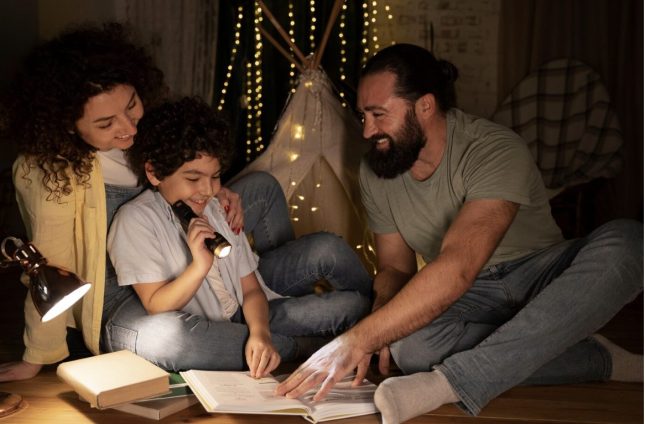You know how some things just hit different in your own language? That’s because language isn’t just words—it’s your history, your vibe, your entire worldview wrapped up in sounds and syllables. In Aotearoa New Zealand, Te Reo Māori—yep, the original language of the land—has made one heck of a comeback. After being nearly wiped out thanks to colonisation (ugh), it’s now having a full-on glow-up, popping up in schools, homes, and even bedtime stories. But let’s be real—learning a language isn’t just flashcards and vocab lists. It’s about living it, feeling it, and having easy ways to soak it all in. Enter: bilingual books. Total game-changer.
Why Te Reo Māori Matters for Families
Te Reo Māori is having a moment—and honestly, it’s about time. According to the 2018 Census, around 185,000 people said they could speak at least some Te Reo. Sure, that’s not a massive chunk of the population, but hey, the numbers are climbing, and we love to see it. More and more parents—Māori and non-Māori alike—are slipping Te Reo into their daily chats, songs, and bedtime stories. Because it’s not just about learning a few cool phrases. It’s about reconnecting with culture, identity, and something much deeper than just words.
So, why are people jumping on the waka? Lots of reasons. Some families are rediscovering their whakapapa and want to reclaim their language. Others are all about those brain-boosting bilingual benefits—because apparently, speaking two languages makes kids little problem-solving ninjas. And then there are the ones who just fall in love with how beautiful Te Reo sounds (seriously, have you heard a proper haka?). Oh, and let’s not forget the justice angle—Te Reo is one of New Zealand’s official languages, yet for way too long, it was pushed aside. Now? We’re finally giving it the mana it deserves.
Bilingual Books: A Bridge Between Generations
Let’s be honest—learning a new language as an adult can feel like trying to assemble IKEA furniture without the instructions. Meanwhile, kids? Absolute language sponges. Give them the right exposure early on, and they soak it up without even trying.
That’s where bilingual books come in clutch. Picture this: you and your kid snuggled up on the couch, reading a beautifully illustrated story about a cheeky little kiwi wandering through the New Zealand bush. The words are in both English and Te Reo Māori. As you read, your kid starts picking up the rhythm, the sounds, the patterns—and suddenly, Te Reo isn’t some mysterious other language. It’s just… part of storytime.
And here’s the magic—you don’t have to be fluent either. With bilingual books, you’re learning together. It’s low-pressure, super chill, and kind of heartwarming. Plus, it turns language learning into a shared experience instead of another thing on the to-do list.
And if your kid’s a bit older—or you’re just craving your own reading fix once they’re finally asleep—there are some awesome apps where you can lose yourself in a good book. I accidentally got hooked on one recently, FictionMe: Novel hub, and now have a digital TBR pile taller than me. Turns out, having thousands of novels in your pocket is both a blessing and a problem when you’re trying to get to bed at a reasonable hour.
What the Research Says About Bilingual Learning
Okay, so here’s the deal—bilingualism isn’t just about doubling your vocabulary or being able to order tacos and dumplings with confidence. According to science (and not just the internet kind), speaking more than one language literally boosts brain power.
Researchers at the University of Auckland found that bilingual kids tend to have better cognitive flexibility and stronger executive function than monolingual kids. Translation: their brains are better at switching tasks, solving problems, and generally handling life. Think of it like giving your brain a really good workout—except instead of lifting weights, it’s juggling languages.
A 2019 study from Massey University looked specifically at Māori-English bilingual education and found that tamariki exposed to Te Reo Māori early on were better at creative problem-solving than their monolingual mates. And the Ministry of Education chimed in, too, noting that bilingual kids often end up with better literacy skills in both languages. Basically, reading Te Reo Māori books = helping your child grow into a brainy little legend.
The Growth of Te Reo Māori Books in New Zealand
And the good news? There are more bilingual books available now than ever. New Zealand publishers are finally catching up to the fact that families want more of this goodness—and Māori authors and illustrators are absolutely delivering.
Big players like Huia Publishers and Scholastic NZ are putting out beautiful bilingual books for kids of all ages. Plus, with initiatives like the Te Awhi Rito Reading Ambassador (launched in 2021), there’s a real push to make sure these stories are getting into homes, classrooms, and libraries across the motu.
Some must-reads to check out:
- Tāne Mahuta Has a Forest by Robyn Kahukiwa – a seriously stunning picture book about the Māori creation story.
Kuwi’s First Egg by Kat Quin – an adorable story about a kiwi mum, available in both English and Te Reo (plus it’s hilarious). - Whakarongo ki ō Tūpuna by Darryn Joseph – introduces kids to Māori proverbs and some solid wisdom from the ancestors.
What makes these books extra special? They’re not just English stories with a Māori translation slapped on the side. They’re steeped in culture, language, and storytelling that feels genuinely local. Whether you’ve got Māori heritage or you’re just on a journey to learn more, these books make it easy (and super heartwarming) to bring Te Reo into your everyday life.
How Families Can Use Bilingual Books at Home
Okay, so you’ve got a bilingual book in your hands. Now what? Don’t worry, you don’t need to be fluent—or even close—to make it work. Here’s how real families are making it happen without turning storytime into a language lesson from the 1800s:
- Start Simple – Go for books with repeat-y phrases and everyday words (think: “Kia ora,” “kai,” “whānau”). Repetition = confidence booster.
- Read Aloud Together – Yes, even if your pronunciation feels a little wonky. Kids don’t care. And the more you say it, the more natural it feels.
- Make It Interactive – Point to pictures, ask questions like “Where’s the manu?” and celebrate wildly when your kid nails it. Language + fun = win.
- Use Audio Support – Some books come with audio read by fluent speakers, which is super helpful. Think of it as the Spotify of storytime, but educational.
- Slip Māori Phrases Into Everyday Life – Little things like saying “Ka pai!” when your kid finishes their broccoli, or “Haere rā!” at school drop-off, help the language feel normal. No flashcards required.
Real Talk: The Challenges
Let’s keep it 100—this journey isn’t always easy. Bilingual books can be hard to find, especially if you’re outside the main cities. Some parents worry they’ll mess it up or feel like they’re “not Māori enough” to use the language at home. And sometimes it’s just hard to find books that your kids actually want to read.
But here’s the good news: things are changing.
Government programmes like Te Ahu o Te Reo Māori are pushing for more language use in schools and communities. Libraries are slowly but surely building better bilingual sections. And thanks to online resources like Te Whanake and Reo Māori for Kids, you can bring the language into your home without leaving the couch.
Final Thoughts
Language is so much more than just talking—it’s connection. It’s culture. It’s the little threads that tie us to each other, and to our past.
Whether your whānau is just starting out with “Kia ora” at the breakfast table or you’re deep into your Te Reo journey, every little bit counts. One story. One sentence. One word at a time.
And as more Kiwi families say yes to this adventure—imperfect, beautiful, and uniquely ours—Te Reo Māori keeps growing stronger.







